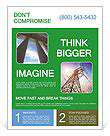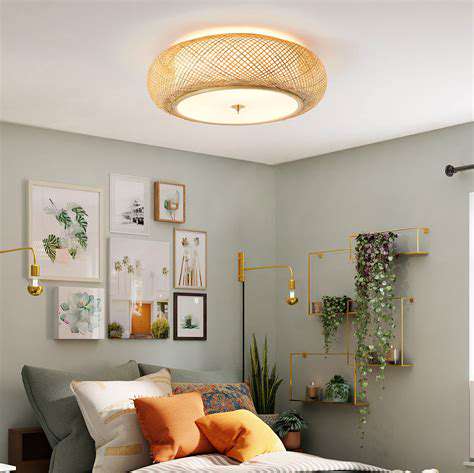How to Organize Your Office Desk for Productivity
Ergonomics: Setting Up Your Workspace for Comfort and Efficiency
Choosing the Right Chair
Investing in a good ergonomic chair is crucial for long-term comfort and preventing back pain. Look for a chair with adjustable lumbar support, armrests that allow for proper positioning of your forearms, and a seat that allows your feet to rest flat on the floor. Consider the material; breathable fabrics and high-quality mesh can promote airflow and comfort during extended work sessions. Proper adjustments are key, ensuring your hips and knees are at a 90-degree angle and your feet are flat on the floor. This will maintain good posture and reduce strain on your back and legs.
A chair that conforms to your body, rather than your body conforming to the chair, is essential for a productive and comfortable work environment. The right chair can significantly reduce discomfort and promote better blood circulation, preventing stiffness and fatigue. This translates to increased focus and efficiency throughout the workday.
Desk and Monitor Placement
Your desk should be a suitable height to allow for proper posture. Your elbows should be bent at a 90-degree angle when typing, and your wrists should be straight. Ensure your monitor is positioned at arm's length and slightly below eye level. This prevents strain on your neck and eyes and reduces the risk of developing eye fatigue and headaches, particularly during extended periods of work.
A cluttered desk can lead to stress and reduced productivity. Keep your workspace organized and free from unnecessary items. Designated areas for frequently used items will improve workflow and reduce distractions. Maintain a clean and organized space to optimize your focus and efficiency.
Keyboard and Mouse Positioning
Position your keyboard and mouse so your wrists are straight and your forearms are parallel to the floor. Avoid hunching or stretching your arms and hands unnaturally. Use a wrist rest if needed to support your wrists and reduce strain. A properly positioned keyboard and mouse can significantly reduce the risk of carpal tunnel syndrome and other repetitive strain injuries.
Lighting and General Workspace Layout
Adequate lighting is essential for reducing eye strain and promoting focus. Natural light is ideal, but supplementary lighting should be used to prevent shadows and glare. Consider using a combination of task lighting and ambient lighting. A well-lit workspace can improve clarity, reduce eye fatigue, and contribute to a more productive environment.
Maintain a clear line of sight to all necessary tools and documents. Keep frequently used items within easy reach to minimize unnecessary movement and reduce interruptions. This streamlined layout will increase productivity and reduce stress by minimizing distractions.

Maintaining Your Organized System: A Continuous Effort for Long-Term Success
Understanding the Foundation of Organization
A well-organized system isn't a one-time project; it's a continuous process that requires understanding the core principles of organization. This involves more than just tidying up; it's about establishing clear systems for storing, retrieving, and managing information and resources. This fundamental understanding forms the bedrock upon which all future organizational efforts are built, ensuring that you're not just maintaining a tidy space but also a streamlined workflow and a clear mental space.
Identifying your specific needs and goals is crucial. What are you hoping to achieve with this organizational system? Are you looking to streamline your workflow, reduce stress, or simply have a more aesthetically pleasing space? Knowing your motivations helps tailor the system to your particular requirements, making it more likely to stick and provide long-term benefits.
Establishing Clear Categorization Systems
One of the most important aspects of maintaining an organized system is developing a robust categorization system. This involves creating clear and consistent labels, folders, or digital tags to categorize your items. This structure allows you to quickly locate what you need, reducing wasted time and frustration. It's not just about having labels, but about ensuring those labels are meaningful and consistent across your entire system.
Implementing Regular Review and Adjustment
Organizational systems, like living organisms, need regular maintenance and adjustments. Regularly reviewing your system is key to identifying areas that are no longer effective or efficient. Are there categories that need to be merged or split? Have new items or needs emerged that require modifications to your system? Regular checks ensure that your system remains adaptable and responsive to your evolving needs.
Prioritizing Proactive Maintenance
Proactive maintenance is more efficient and less disruptive than reactive fixes. This involves regularly reviewing and updating your system before it becomes overwhelming. This could include decluttering regularly, updating your filing system, or reviewing your digital folders. By taking these preventative steps, you avoid the stress and frustration of scrambling to organize when things become chaotic.
Cultivating Consistent Habits
Consistency is the cornerstone of a long-term organized system. Developing consistent habits, like setting aside time each week for organizing, reduces the likelihood of your system falling into disarray. These habits could include daily tidying, weekly decluttering sessions, or monthly reviews. Consistency allows your system to remain functional and effective over time.
Harnessing Technology for Enhanced Organization
Modern technology offers powerful tools for enhancing organizational systems. Consider using digital tools for managing files, tasks, and projects. Cloud storage, project management software, and digital calendars can streamline your workflow and help keep track of important information. Leveraging these tools can significantly reduce the time and effort required to maintain an organized system, particularly for complex or large-scale projects.
![Guide to Learning [Specific Software, e.g., Excel]](/static/images/31/2025-04/CreatingandFormattingCharts3AVisualizingYourData.jpg)





![How to Use AI Tools for Studying Effectively [Ethics]](/static/images/31/2025-05/MitigatingPotentialEthicalConcernsAssociatedwithAIStudyTools.jpg)
![Best Free Resources for Learning [Specific Subject, e.g., Calculus]](/static/images/31/2025-05/PracticeProblemsandSolutionSets.jpg)



